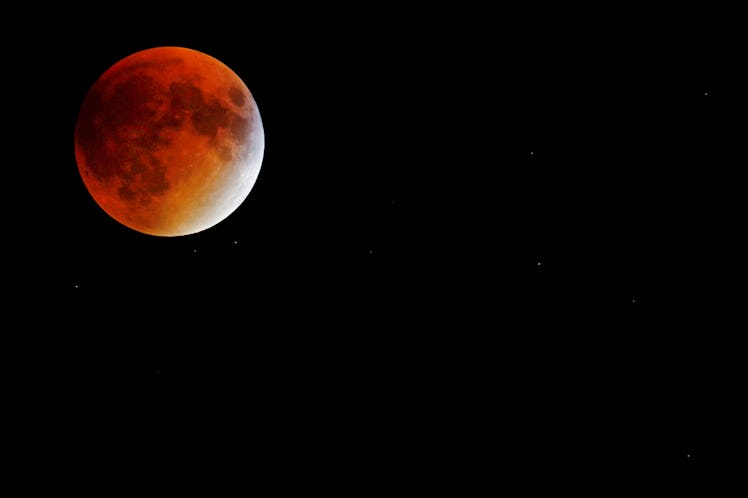
You Won’t Believe How Long Ago The Last Super Blue Blood Moon Appeared
Keeping up with the news can sometimes be a very disappointing (if not downright depressing) activity. Sometimes, though, super cool bits of information make their way to the presses to brighten up your day. Last August, there was hype surrounding the solar eclipse, but this month is all about a lunar happening. As you learn about what to expect when the super blue blood moon appears on Jan. 31, you might wonder about how common an occurrence it actually is. So, when was the last super blue blood moon?
In short, it was a long time ago. You see, a super blue blood moon is categorized by a trifecta of celestial events, according to NASA. The first criteria requires it to be a supermoon, which means it is at a point in the moon's orbit when it's closest to Earth. Next, it must be a blue moon, which is the term attributed to the second full moon of a calendar month. Finally, to get a super blue blood moon, there needs to be a total lunar eclipse, in which the Earth's shadow gives the moon a reddish tint.
The last time all three of these criteria were met in the Western Hemisphere to create a super blue blood moon was over 150 years ago on March 31, 1866, according to Science Alert (see, I told you it was a long time ago). Space.com reports that there was a total lunar eclipse during a blue moon in the Eastern Hemisphere on Dec. 30, 1982, but that was only visible for a few areas of the world.
This year, the super blue blood moon will be visible on Jan. 31, 2018 for the western half of North America. Let's journey back to the last super blue blood moon for that location, though. Of course 150 years sounds like a long time all on its own, but you can really put into perspective when you think about everything that has happened (hint: a lot) in that great span of time. For starters, the last time the super blue blood moon made a showing was just less than a year after the end of the American Civil War. For a history refresher, that was on April 9, 1865 when General Robert E. Lee surrendered to Union General Ulysses S. Grant at Appomattox, Virginia, according to The History Channel.
The fact that the last super blue blood moon was so long ago also means that pretty much anyone who sees it this year in the Western Hemisphere will be seeing it for the first time ever. For some perspective, the current oldest person alive (117-year-old Violet Brown, according to The Guardian) was still 33 years from even being born when the last super blue blood moon occurred in North America on March 31, 1866. So, everyone who gets a look at the awesome lunar event on Jan. 31 will be sharing this "first" with his or her fellow moon-gazers, and I think that is a special connection to remember (especially in these currently divisive times).
Now that you know what a special occurrence this awesome lunar event truly is, you can start planning to make sure that you have the perfect view of it. The most important condition necessary for an exceptional view of the super blue blood moon is a clear sky. Of course, that is out of your control, but you can keep your fingers crossed for a cloudless early morning on Jan. 31.
What you can plan, though, is to wake up at the right time to get the best view of the super blue blood moon. I'm warning you now that you'll have to rise very early, and you'll also want to check the best time for viewing this total lunar eclipse according to your time zone — it'll be anywhere between 5 a.m. and 7 a.m. in your respective U.S. time zone.
Another fair warning: Jan. 31 is a Wednesday, so you'll likely have to drag your groggy self to work after watching this spectacular lunar show — but witnessing a bit of 150-years-in-the-making history is definitely worth a midday slump.